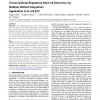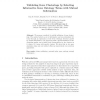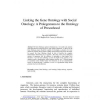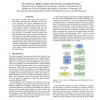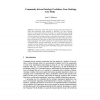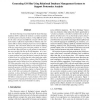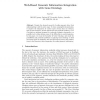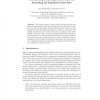ALMOB
2007
13 years 11 months ago
2007
Motivation: Transcriptional regulatory network (TRN) discovery from one method (e.g. microarray analysis, gene ontology, phylogenic similarity) does not seem feasible due to lack ...
WOB
2007
14 years 18 days ago
2007
Abstract. We propose a method for global validation of gene clusterings. The method selects a set of informative and non-redundant GO terms through an exploration of the Gene Ontol...
FOIS
2006
14 years 25 days ago
2006
The Gene Ontology captures information at a very small scale, namely: molecular function, biological process, and cellular components. At this level, the Gene Ontology project shou...
IJCAI
2007
14 years 26 days ago
2007
This paper describes how high level biological knowledge obtained from ontologies such as the Gene Ontology (GO) can be integrated with low level information extracted from a Baye...
BIS
2008
14 years 27 days ago
2008
Abstract. Communities on the Web capture, represent, and evolve their knowledge using ontologies, either explicitly or implicitly. The Gene Ontology project is a typical and advanc...
CBMS
2008
IEEE
14 years 1 months ago
2008
IEEE
The Gene Ontology Consortium built the Gene Ontology database (GO) to address the need for a common standard in naming genes and gene products. Using different names for the same ...
APWEB
2006
Springer
14 years 3 months ago
2006
Springer
Despite the dramatic growth of online genomic data, their understanding is still in early stage. To have meaningful interpretation, it requires the integration of various types of ...
BIBE
2009
IEEE
14 years 4 months ago
2009
IEEE
Gene and protein structural and functional annotations expressed through controlled terminologies and ontologies are paramount especially for the aim of inferring new biomedical k...
AIME
2007
Springer
14 years 5 months ago
2007
Springer
This paper presents a novel method integrating gene-gene interaction information and Gene Ontology for the construction of new gene sets that are potentially enriched. Enrichment o...
CBMS
2007
IEEE
14 years 5 months ago
2007
IEEE
This paper describes how high level biological knowledge obtained from ontologies such as the Gene Ontology (GO) can be integrated with low level information extracted from a Baye...
